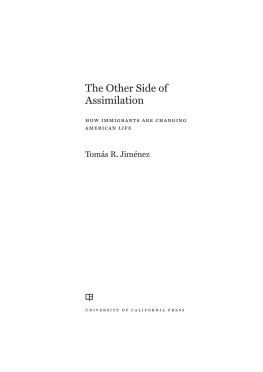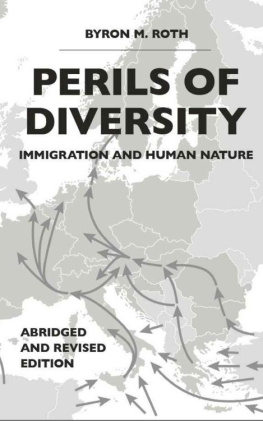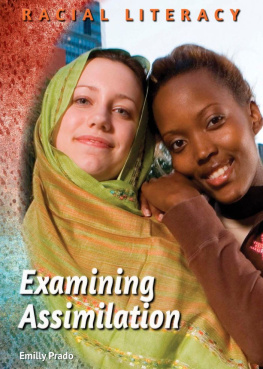Preface
The idea for this book came from a long walk with my wife, Nova. It was the summer of 2008, and we were about to move back to Silicon Valley after having been away for ten years. We both grew up in the Valleyshe in San Jose, and I in Santa Claraduring the 1980s and 90s. Our impending return to the region where we had grown up sparked a conversation about what things were like during our childhood, and how much they had changed since last we lived there. During our youth, Silicon Valley was coming into its own as a global hub of technological innovation. It was also during that time that the Valley emerged as a popular landing spot for immigrants from Asia, Latin America, and beyond. We knew many of these immigrants and their children. Nova, having grown up in the eastern part of San Jose, played and went to school with the children of immigrants from Mexico, the Philippines, and Vietnam. Santa Clara, where I grew up, had large Filipino, Vietnamese, Mexican, and Portuguese populations that were a mix of U.S.- and foreign-born individuals. Some of the immigrants and their children were my friends, my classmates, and my teammates in soccer, baseball, and basketball.
When we had returned to visit family during our decade away, we had noticed our hometowns were changing. Many immigrant Chinese and Indian families had settled in the neighborhoods of my youth. The east San Jose neighborhoods where Nova had spent her childhood were bustling with new Latino and Asian arrivals. Our informal observations squared with what often-cited demographic data showed about the region: by the turn of the twenty-first century, it had become one of the largest per capita immigrant destinations in the nation, and a majority of the population was made up of people of color.
As Nova and I continued our walk that summer evening, our recollections turned to our immigrant and second-generation childhood friends, and what had become of them. Many seemed to have followed the story of assimilation portrayed in academic research. We noted that they all spoke English, that many were enthusiastic consumers of American popular culture, that they had found different paths into the middle class, and that many had dated and eventually married people from ethnic backgrounds different from their own. That view of their assimilation fit with the model of American immigration I had learned from my own study of immigration in the United States. Throughout graduate school and into my early career as an academic sociologist, I had been deeply engaged with debates about immigrant assimilation. What I read about assimilation treated it as a process that found each new generation born in the United States becoming more similar to the populations that were already there. In my own early research, I looked at how ongoing immigration shaped the experiences of the later-generation descendants of the early twentieth-century Mexican immigration wave. As I conducted that research, I occasionally wrestled with the question of who was assimilating to whom, and the book that resulted (Replenished Ethnicity: Mexican Americans, Immigration, and Identity) documented the various ways that ongoing Mexican immigration had a significant influence on the lives of Mexican Americans whose families had lived in the United States for generations. But the conclusions I drew in that book, as well as my other research and writing, nonetheless followed the conventional thinking about assimilation.
As our walk wore on, Nova began reflecting more about what it was like for her to come of age around so many people living in immigrant households. She spoke of the normalcy that came with growing up around people whose parents came from another country. She talked about encounters with other ethnic traditions. She had enjoyed them and came to feel as though some, like Chinese New Year and Cinco de Mayo, were somehow American. She spoke of not being able to understand some of her friends parents because they spoke languages other than English. But she also picked up a few words of those languagesenough to joke with her friends. And she talked about her mixed Mexican and Irish ancestry leading her to be seen as the white girl in some contexts, but the Mexican girl in others. Her own identity, how she saw herself, seemed to depend on whether she was around mostly Asians, mostly Mexicans, or a mixed group of peers.
As she went on, I interrupted, asking, So, was it like you were adjusting to all of the immigration? Exactly! she quickly replied.
Our conversation during that long summer walk, along with a catalogue of my own informal observations, prompted me to begin to study assimilation in a different light. It spurred me to think about assimilation in a way that reflected Novas and my recollections of a childhood full of interactions with immigrants and their children. It led me to turn assimilation on its head in order to consider how immigration might shape the experiences of the most established people in the United States: the people who are not immigrants or the children of immigrants.
Nova and I were not alone in noticing how much things had changed in our respective hometowns because of immigration. Close observers have marveled at the ways that immigrants to America have transformed virtually every aspect of our national life. In spite of that commonly articulated observation, however, scholars interested in understanding assimilation have focused almost exclusively on how immigrants and their childrennewcomers as I call them in this bookadjust to the new racial, class, and political contexts in the United States. The observation about the abundant changes resulting from immigration raises an obvious, but important question: How do people whose families have been in the United States for several generations adjust to all of these changes?







